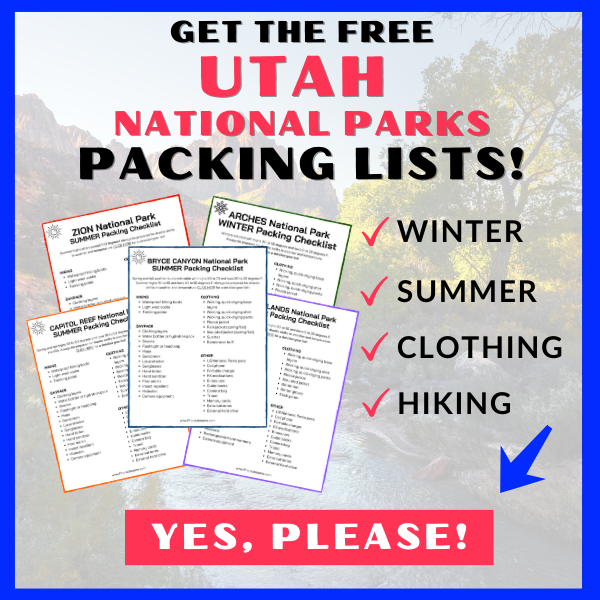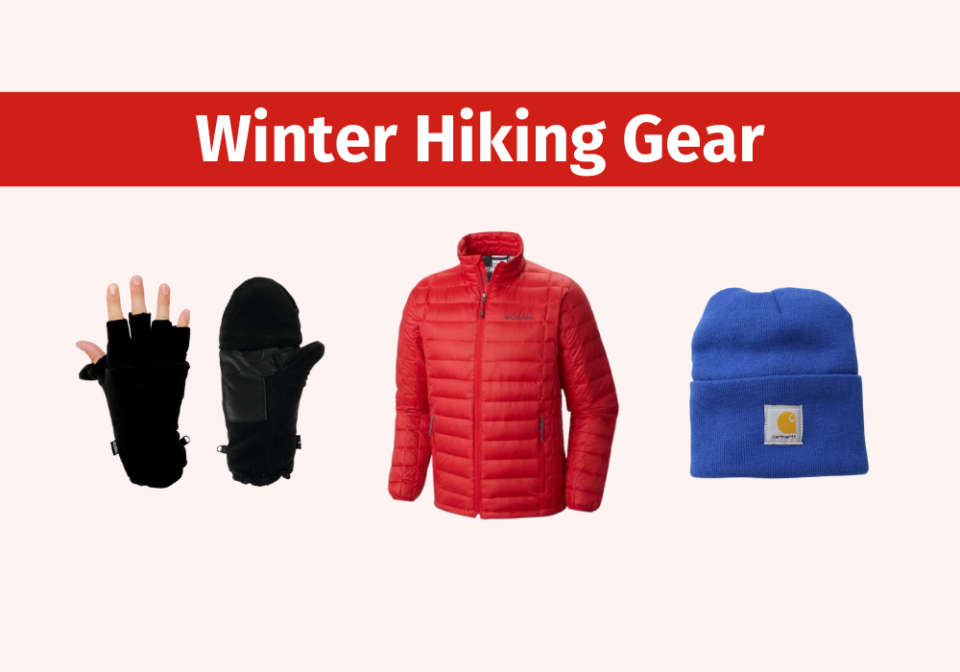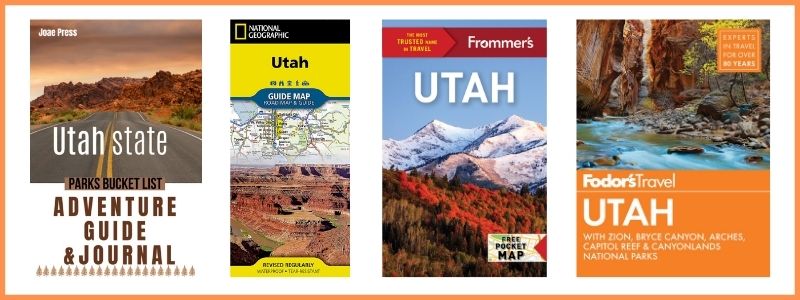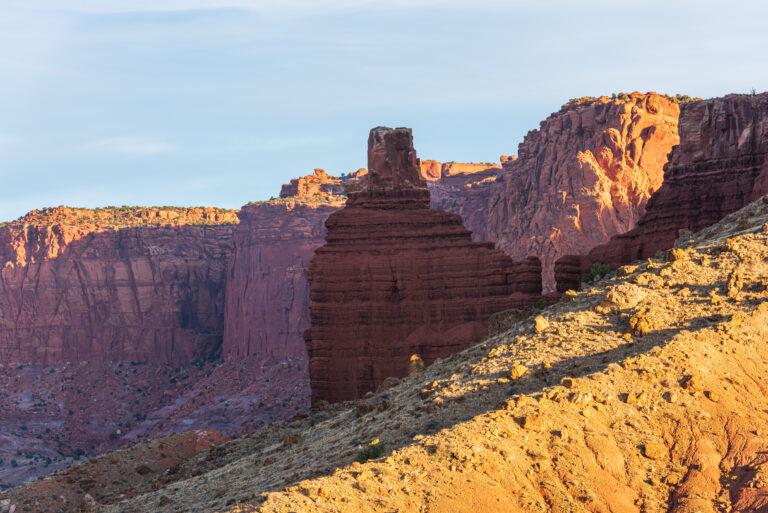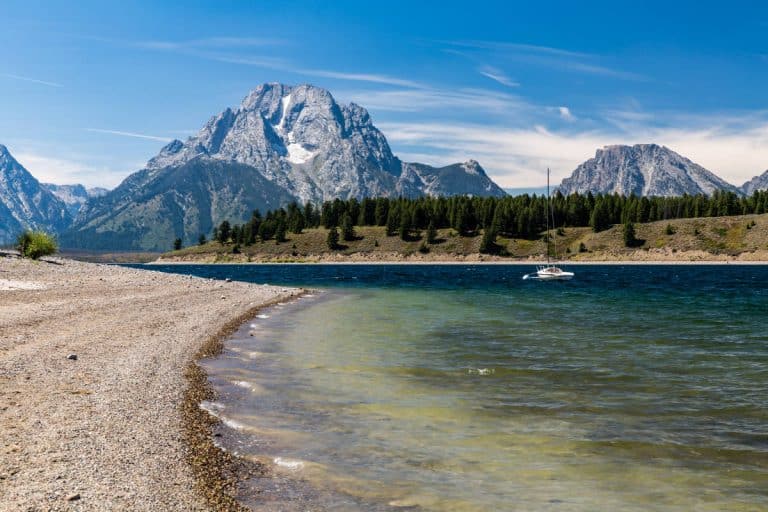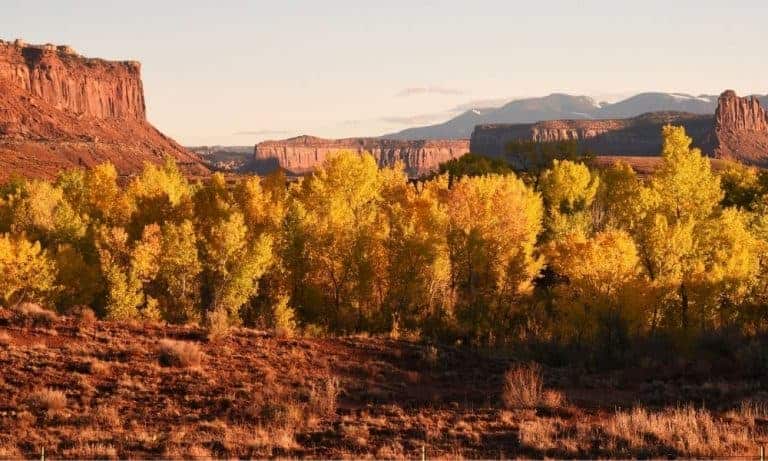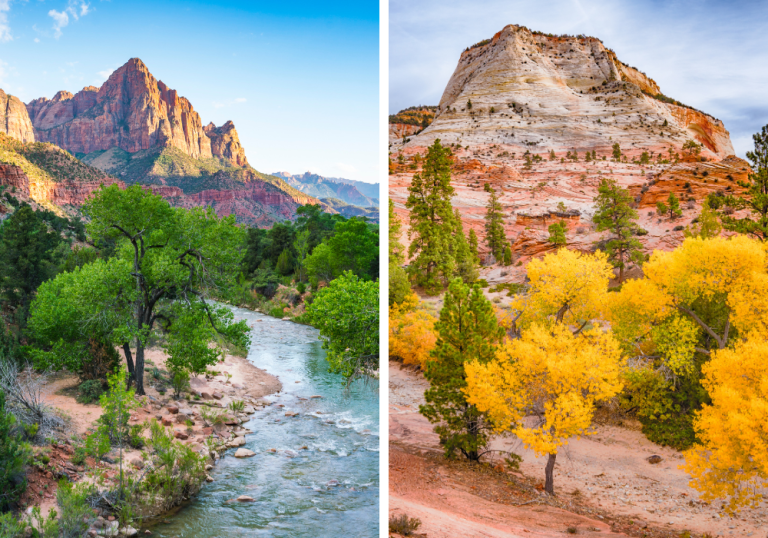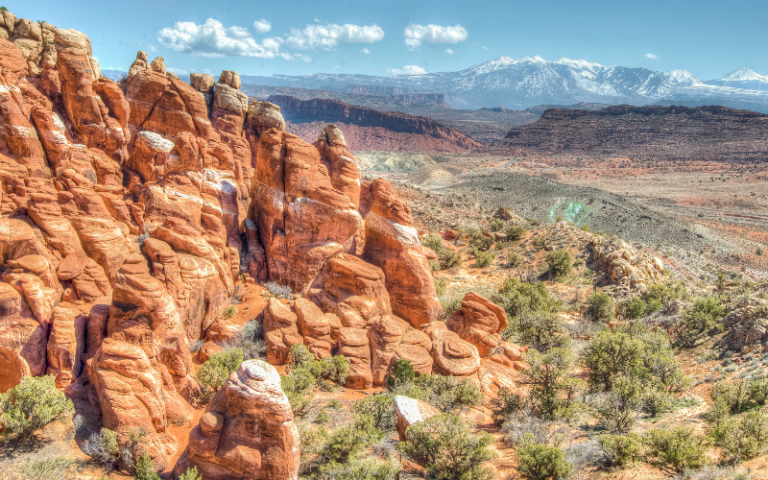Utah National Parks Winter Weather
It’s important to be prepared for Utah National Parks weather during the winter months. The temperatures will be COLD and snow storms are possible any time during the winter season.
We’ve written this Utah National Parks winter weather guide to help you know specifically the weather and temperatures to expect for the months of December, January, and February.
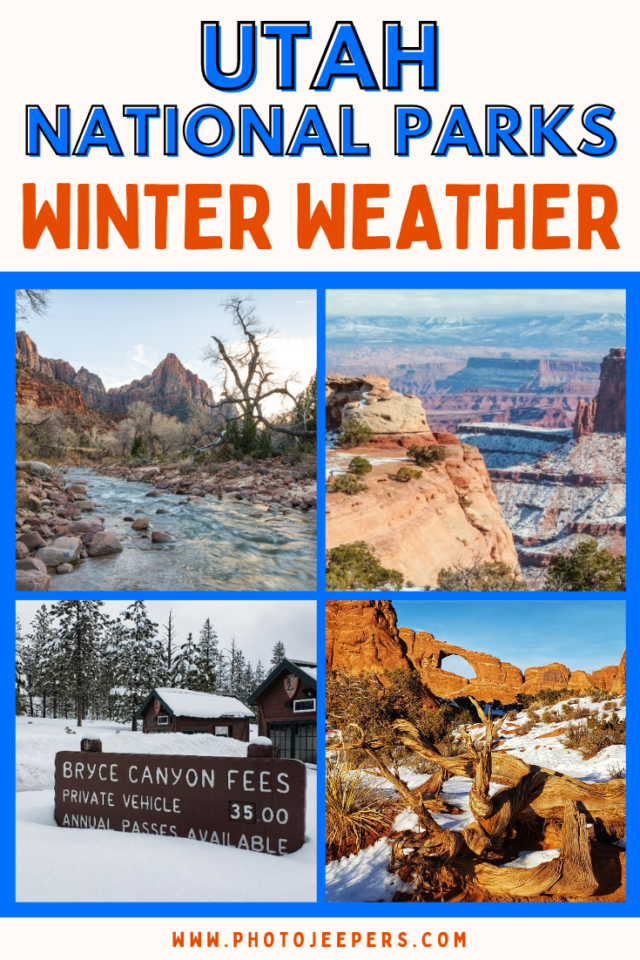
But before you hit the road for your Utah national parks adventure, it’s crucial to do your research and plan accordingly to ensure a safe and enjoyable trip.
We live only hours away from all Utah’s Mighty 5 National Parks and have visited during all four seasons. The information and tips we share about the winter weather at Utah National Parks is based on our experiences over the years!
Check the expected weather and temperatures for the park you’ll be visiting so you’re prepared with clothing layers and the supplies you’ll need for the activities you want to do.
Use our packing list for Utah National Parks to make sure you have the right clothing and gear for visiting in the winter! Grab your free printable packing checklist by clicking the image below!
This site contains affiliate links which means WE may receive commissions for purchases made through these links. We only provide links to products we actually use and/or wholeheartedly recommend! As an Amazon Associate, we earn from qualifying purchases. Read the full Disclosure Policy.
What to Pack for Utah National Parks in the Winter
It’s important to stay hydrated since all five Utah National Parks are in a dry, desert environment. We recommend outdoor winter clothing that includes insulated layers for the cold mornings and evenings, and a fleece jacket for daytime activities when the sun is out and temperatures aren’t freezing!
- Fleece jacket
- Insulted jacket
- Winter hat
- Winter gloves
- Waterproof hiking boots
- Insulated boots
- Refillable water bottle
- Hydration pack
- Due to Utah’s dry climate, you’ll also want lip balm and lotion!
Click the graphic below to see the Winter Hiking Gear we use and recommend to enjoy outdoor activities at Utah National Parks in the winter.
A Photo Tour of Utah National Parks
Take a visual tour through all five Utah National Parks to see the stunning landscapes you’ll see when you visit!
Visiting Utah National Parks in the Winter
The national parks are must-see places to visit in Utah! Winter is one of the best times to enjoy the parks with fewer crowds! The parks are open 24/7 all year long, but the Visitor Centers will be closed on holidays.
Many Utah National Parks are busy during the week between Christmas and New Years so it’s best to plan to enter the parks early in the day to avoid lines. During that week the Zion Shuttle will be running to take visitors into Zion Canyon.
Also, check to see if any of the parks require a ticket to enter the park or participate in any activity. In December you’ll need to get an Angel’s Landing hiking permit to hike beyond Scouts Landing in the chains section.
From hiking trails to scenic drives, there are Utah National Parks activities for everyone during the winter season.
Use these resources to plan your Utah National Park vacation:
- Arches National Park travel guide
- Bryce Canyon travel guide
- Canyonlands National Park guide
- Capitol Reef National Park guide
- Zion National Park travel guide
Check out the Utah National Parks GuideAlong App to hear fun behind-the scenes stories and local tips that play automatically as you drive, based on your GPS location as you drive through each park!
Utah National Parks Winter Weather
December, January, and February are great months to visit Utah National Parks if you’re looking for times to visit without the crowds!
As long as you’re dressed for the weather, the cold temperatures or snowy conditions will help you be comfortable enjoying outside activities. But we know the winter weather at Utah National Parks might not be for everyone. It’s good to know in advance the average temperatures and typical weather conditions for the month.
Here’s what you can expect at each of the 5 Utah National Parks in the winter.
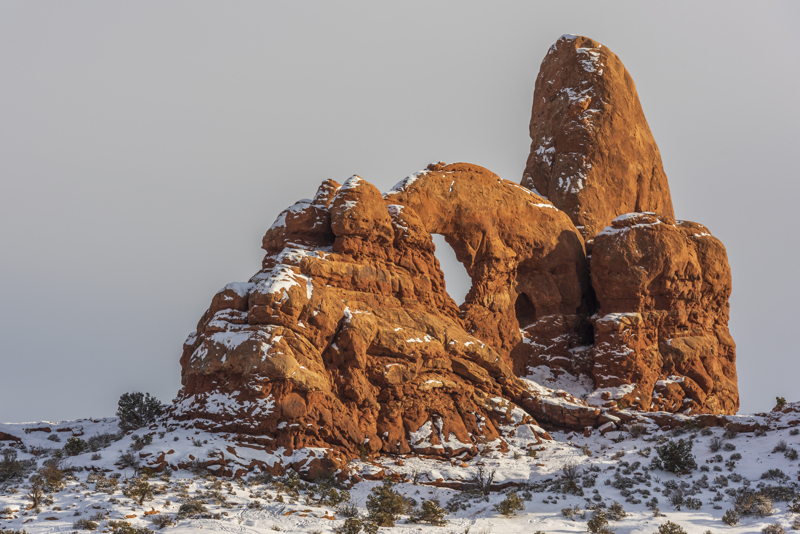
Winter Weather at Arches National Park
The temperatures really drop at Arches in the winter, making it the least busy season. We don’t mind the colder weather for enjoying outdoor activities, but you’ll want to dress in layers!
- Arches in December: Highs 45 | Lows 23 degrees F
- Arches in January: Highs 44 | Lows 22 degrees F
- Arches in February: Highs 52 | Lows 28 degrees F
The cold and maybe snowy Arches National Park weather in the winter means the park is much quieter and less crowded, giving you a more intimate experience with nature.
When it does snow, you’ll be able to capture the most amazing Arches National Park winter photos with the contrast of the red rocks and white snow!
Here’s a list of the fun things you can do at Arches in the winter:
- Arches National Park winter activities
- Arches National Park winter hikes
- Arches National Park winter camping
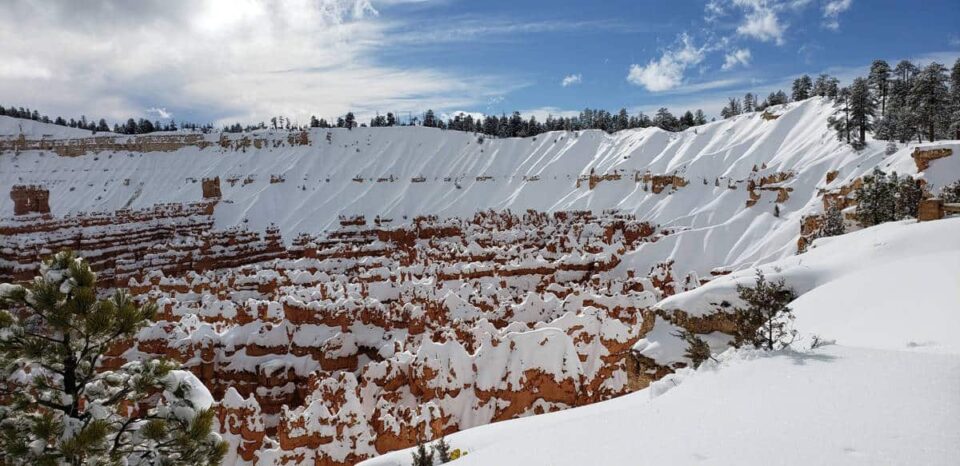
Winter Weather at Bryce Canyon
Due to the elevation, the weather at Bryce Canyon will be cold and snowy! The crowds are gone for the season and you can truly appreciate this park in all its natural beauty.
The Bryce Canyon viewpoints will be especially gorgeous with the white snow contrasting against the red orange hoodoos.
- Bryce Canyon in December – highs 26° F | lows 12° F
- Bryce Canyon in January – highs 36° F | lows 11° F
- Bryce Canyon in February – highs 36° F | lows 11° F
Don’t let the snow and cold temperatures deter you from visiting in the winter. You’ll enjoy fun snow activities at Bryce Canyon like snowshoeing, sledding and cross-country skiing.
Be sure to have your camera handy to capture Bryce Canyon winter photos of the colorful hoodoo landscape covered in snow!
The park does a great job of plowing the Bryce Canyon roads as well as the parking lots near the viewpoints. Always check the Bryce Canyon website for current conditions.
Here’s a list of activities you can do at Bryce Canyon during the winter months:
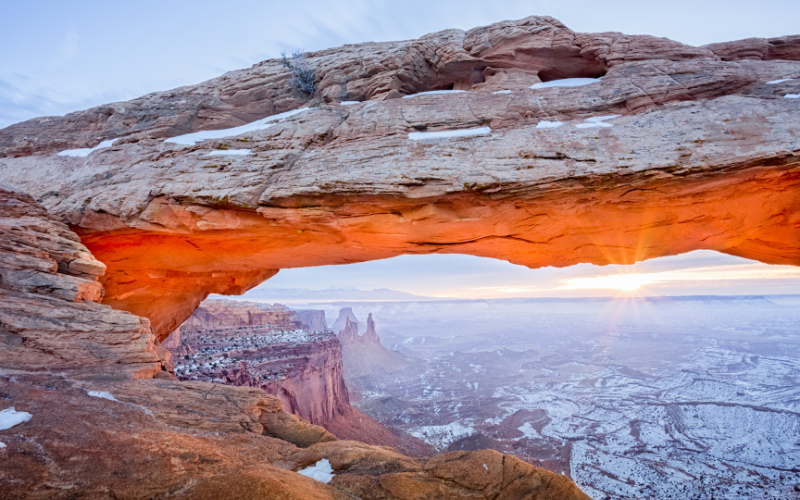
Winter Weather at Canyonlands
The Canyonlands National Park weather will be cold and may be snowy during the winter. Definitely wear winter clothing, and be sure to pack any supplies you need if you’ll visit Island in the Sky or Needles.
- Canyonlands in December : Highs 45 | Lows 23 degrees F
- Canyonlands in January : Highs 44 | Lows 22 degrees F
- Canyonlands in February: Highs 52 | Lows 28 degrees F
Visitor services are reduced at both Canyonlands Island in the Sky and Needles so you’ll need to be more self-reliant in the winter. The roads may be snow-covered and icy or even closed after a storm so always check the website for current conditions.
Winter is a terrific time to take Canyonlands National Park photos, especially at the iconic locations like Mesa Arch at sunrise! We always feel lucky when we can get a picture with the arch and the snowy landscape background!
If you’re dressed for the weather conditions, you can also enjoy fun winter activities at Canyonlands:
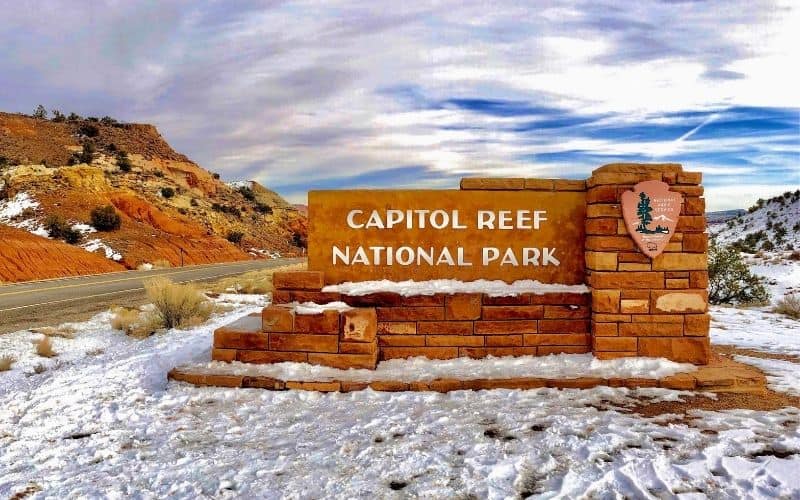
Winter Weather at Capitol Reef
You’ll experience cold temperatures and intermittent snowy Capitol Reef National Park weather during the winter months.
- Capitol Reef in December: Highs 39 | Lows 19 degrees F
- Capitol Reef in January: Highs 39 | Lows 18 degrees F
- Capitol Reef in February: Highs 45 | Lows 23 degrees F
We don’t mind the colder weather for enjoying some of the outdoor activities you can do at Capitol Reef, which makes the winter the best time for us to visit to escape the crowds!
If a wet storm has rolled through the area, both the Capitol Reef Cathedral Valley Loop and the full Capitol Reef Burr Trail Loop can be impassable. You definitely don’t want to get stuck in these more remote and rugged parts of the park. Check at the visitor center before heading out!
Here are some fun Capitol Reef winter activities you can do:
- Capitol Reef National Park winter activities
- Capitol Reef National Park winter hikes
- Capitol Reef National Park winter camping
Winter Weather at Zion National Park
The Zion National Park weather will be cold so bundle up! Located in Southern Utah, the park normally does not see a lot of snow, up to 5 inches a year. But when it does snow at Zion, the contrast of the colorful rocks with the white snow is just beautiful.
- Zion in December: high 48 | low 24 degrees F
- Zion in January: high 50 | low 25 degrees F
- Zion in February: high 49 | low 25 degrees F
The Zion National Park scenic drives are must-do activities. With winter being less crowded one of the benefits is that you can drive your car through Zion Canyon (except for the holidays at Christmas/New Year’s and President’s weekend in February). The Zion National Park shuttle will be operating during those busy winter holidays.
During the winter some Zion activities may be a bit more limited due to cold or snowy conditions! You’ll need special water suits and boots that can be rented in Springdale to do The Narrows or The Subway hikes.
Be sure to get an Angels Landing permit to hike the chains section, or you can hike as far as Scouts Landing. Check with the visitor center before hiking any trail in the winter. Some trails may be closed due to unsafe conditions. You’ll also want to know what trails have snow or ice that require traction devices.

